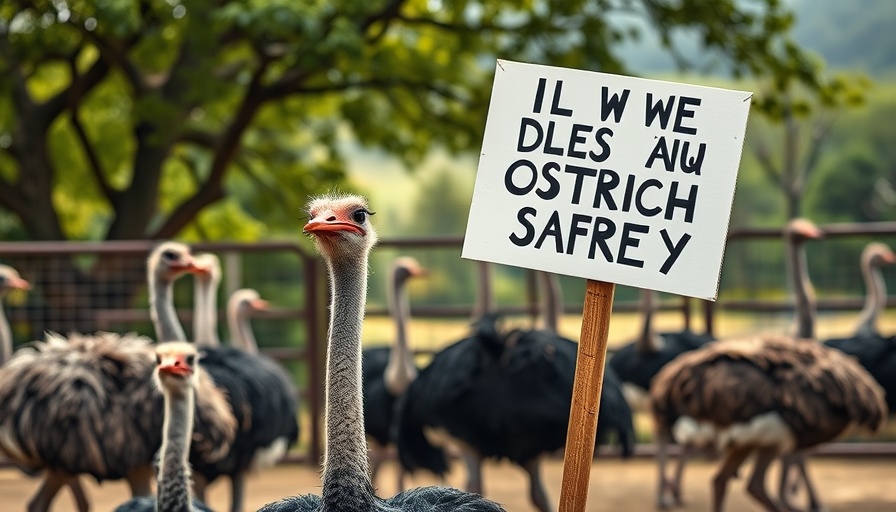
Protests Against Ostrich Cull Continue in British Columbia
In Edgewood, British Columbia, the battle against the Canadian Food Inspection Agency (CFIA) for the fate of nearly 400 ostriches has drawn substantial public support. Over the Victoria long weekend, more than 200 protesters camped at Universal Ostrich Farm, rallying against the agency’s directive to cull the entire flock due to concerns over bird flu. As they prepare for a potentially prolonged protest, the atmosphere is charged with tension and determination.
Understanding the Context of the Cull Order
The CFIA mandated the cull following an outbreak of avian influenza among birds in various regions. The disease can lead to severe health issues within bird populations, prompting authorities to act to contain its spread. Universal Ostrich Farm, which has been embroiled in this situation, was unable to secure a legal victory in its fight to keep the birds alive. This backdrop of public health and animal welfare creates complexities that have fueled the passion of protestors.
A Closer Look at the Protesters' Motivations
According to protester Jim Kerr, the group's intent is to maintain a peaceful yet resolute presence at the farm, aiming to prevent any attempts to carry out the cull through lawful demonstration. Kerr says the protesters are committed to creating a “loving and lawful” environment while still intending to act as a barrier against what they see as an unjust fight against animal rights. Their goal is not only to protect the ostriches but also to spotlight broader issues surrounding animal welfare and governmental authority.
Community Support and Local Government Response
The movement has received backing from the Regional District of Central Kootenay, which recently enacted a resolution to halt the disposal of ostrich carcasses in the region's landfills until further testing can occur. This decision has been interpreted by some as a means to delay the culling process and suggests a growing concern regarding the implications of such measures on local ecosystems and community ethics.
Animal Welfare vs. Public Health: Finding a Balance
This situation calls into question the balance between animal welfare and public health. While the CFIA maintains that the culling is essential to curb potential outbreaks, opponents argue that alternative measures could be explored to safeguard animal life without endangering broader health standards. This debate is particularly resonant in communities where farming and animal husbandry play substantial roles in local economies and identities.
Future Implications for Animal Rights Activism
The development sparks significant implications for future activism concerning animal rights. Protests like these not only raise awareness but also reflect societal values about the treatment of animals. As public awareness grows, activists may gain a new toolset for engaging with regulatory agencies, pushing for more humane policies that consider both animal welfare and health concerns without resorting to extreme measures.
Final Thoughts on the Protests
This ongoing protest at Universal Ostrich Farm represents a vivid tableau of contemporary animal rights activism and public health debates. The protesters' commitment to staying peaceful, while proactively opposing governmental directives, illustrates a critical engagement with ethical questions regarding animal treatment. As the situation develops, both the CFIA and vocal stakeholders in the community will need to navigate these complex waters to reach a resolution that respects both public safety and animal rights.
Ultimately, the outcome of this protest and the response it garners may influence future actions and policies regarding animal welfare in farming practices across Canada. Those concerned with the plight of the ostriches at Universal Ostrich Farm call on their neighbors and the public to engage in this dialogue, shedding light on a critical issue that intertwines community identity with animal welfare.
 Add Row
Add Row  Add
Add 




 Add Row
Add Row  Add
Add 

Write A Comment